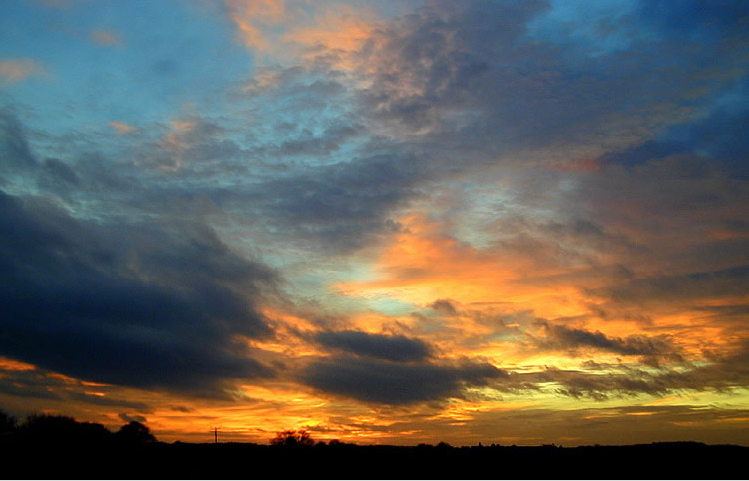Winter sunset
Exploring the Enchanting Phenomenon of Winter Sunsets
As the winter season unfolds, the world around us undergoes a breathtaking transformation. One of the most captivating aspects of this time of year is the mesmerizing display of colors that grace the sky during sunset. Winter sunsets possess a unique charm, captivating our senses with their ethereal beauty. In this article, we will delve into the fascinating phenomenon of winter sunsets, uncovering the science behind their splendor and exploring the myriad of factors that contribute to their enchanting display.
Understanding the Science Behind Winter Sunsets
At the heart of every winter sunset lies a remarkable interplay of light and atmospheric conditions. As the sun descends towards the horizon, its light must pass through a larger portion of Earth's atmosphere, leading to various optical phenomena that paint the sky with a myriad of hues. Let's take a closer look at some key factors that contribute to the spellbinding spectacle of winter sunsets:
-
Scattering of Light: The scattering of sunlight by molecules and tiny particles in the atmosphere plays a pivotal role in creating the kaleidoscope of colors witnessed during a winter sunset. Blue light, being scattered more easily than other colors due to its shorter wavelength, fills the sky during daylight hours, giving it its characteristic azure hue. However, during sunset, the longer-wavelength red and orange light dominate the scene as they are less prone to scattering.
-
Reflections and Absorption: The presence of clouds and the Earth's surface further enhances the complexity of winter sunsets. Clouds can act as mirrors, reflecting and scattering sunlight, intensifying and altering the colors in the sky. Additionally, the ground absorbs certain wavelengths of light, influencing the overall color palette observed during a sunset.
-
Contrasting Complementary Colors: The interplay between adjacent complementary colors adds depth and richness to winter sunsets. By juxtaposing hues that lie opposite each other on the color wheel, such as blue and orange or red and green, the contrast between these complementary colors intensifies their visual impact, creating a visually stunning display.
Unveiling the Subtle Nuances of Winter Sunsets
While the vibrant colors of a winter sunset may initially captivate our attention, a closer examination reveals a myriad of subtle nuances that contribute to their allure. Here are some intriguing details that often go unnoticed:
-
Depleted Blues and Greens: As sunlight traverses the atmosphere during sunset, it becomes depleted in shorter-wavelength blue and green light due to scattering. This depletion leads to the dominance of warmer tones like reds and oranges in the sky, creating a striking contrast with the remaining blues and greens.
-
Skylight Scattering: The blue color of the daytime sky is a result of light scattering by molecules and particles in the atmosphere. During a winter sunset, we can still perceive the blue sky due to the scattering of light by these atmospheric constituents, even though it may appear less prominent amidst the vivid hues of the setting sun.
-
Varied Intensity: The intensity of colors observed during a winter sunset can vary greatly, often defying our initial perception. Seemingly intense greens, for example, may reveal themselves to be subdued gold and olive hues upon closer inspection. These variations in intensity add an element of surprise and intrigue to the overall visual experience.
Capturing the Magic of Winter Sunsets
The ephemeral beauty of winter sunsets presents a captivating opportunity for photographers and enthusiasts alike to capture moments of transcendent splendor. Here are some tips to help you capture the magic of winter sunsets:
-
Timing is Everything: Plan your photography session around the golden hour, which occurs shortly before sunrise or sunset when the soft, warm light enhances the colors and textures in your images.
-
Find a Compelling Composition: Look for interesting foreground elements such as silhouettes, trees, or bodies of water to create a captivating composition that complements the mesmerizing colors of the winter sunset.
-
Experiment with Settings: Play around with your camera's settings to achieve the desired effect. Adjusting the white balance, exposure, and aperture can dramatically alter the mood and intensity of the captured scene.
-
Embrace Post-Processing: Enhance the beauty of your winter sunset photographs through post-processing techniques. Adjusting the saturation, contrast, and color balance can help bring out the subtle nuances and amplify the enchanting atmosphere captured in your images.
Embracing the Winter Sunset Spectacle
Winter sunsets offer a breathtaking spectacle that captivates our senses and fills us with awe. By understanding the underlying science and appreciating the subtle nuances at play, we can deepen our appreciation for these fleeting moments of natural beauty. So, the next time you find yourself gazing at a winter sunset, take a moment to immerse yourself in its magical display, allowing yourself to be transported to a realm where colors dance in harmony and nature's wonders unfold before your eyes.

Winter Twilight Sky. Reds are made by transmitted sunlight depleted in blues and greens by scattering. The blue sky is seen by the light it itself scatters. The combination of skylight with direct sunlight, reflections and absorption by clouds and the ground add yet more variety. Contrast between adjacent complementary colours makes some stronger than they really are. Measure the seemingly intense greens in this unretouched picture - they are mostly subdued gold and olive hues.
Photo ©2003 Les Cowley
Note: this article has been automatically converted from the old site and may not appear as intended. You can find the original article here.
Reference Atmospheric Optics
If you use any of the definitions, information, or data presented on Atmospheric Optics, please copy the link or reference below to properly credit us as the reference source. Thank you!
-
<a href="https://atoptics.co.uk/blog/winter-sunset/">Winter sunset</a>
-
"Winter sunset". Atmospheric Optics. Accessed on November 26, 2024. https://atoptics.co.uk/blog/winter-sunset/.
-
"Winter sunset". Atmospheric Optics, https://atoptics.co.uk/blog/winter-sunset/. Accessed 26 November, 2024
-
Winter sunset. Atmospheric Optics. Retrieved from https://atoptics.co.uk/blog/winter-sunset/.